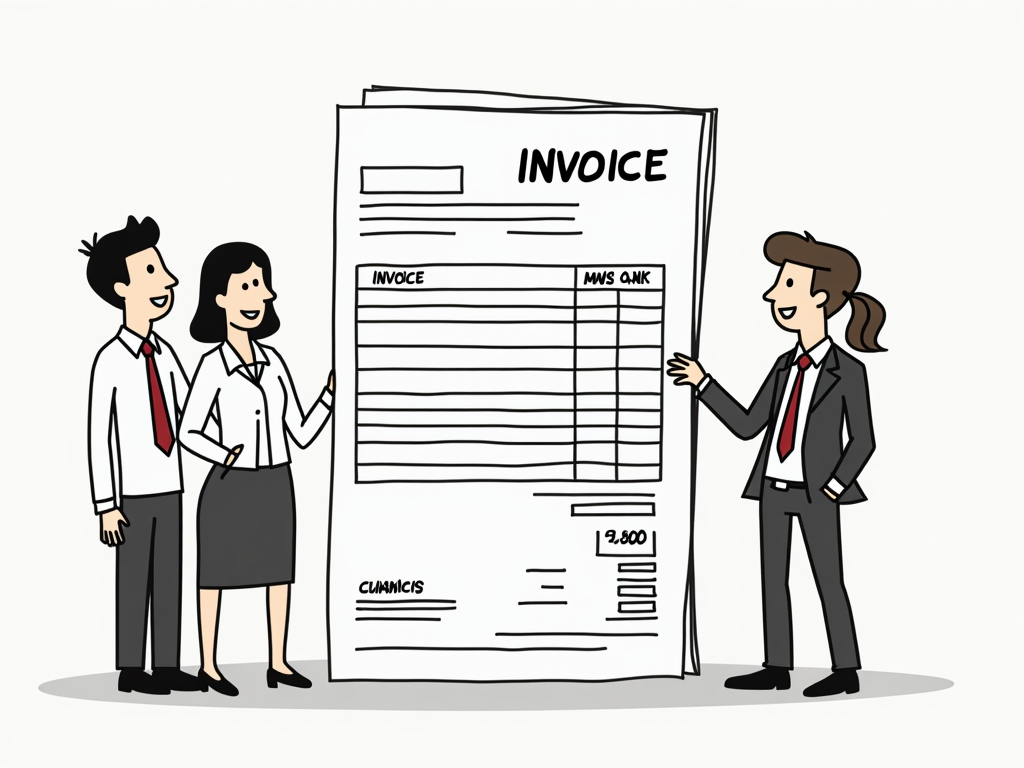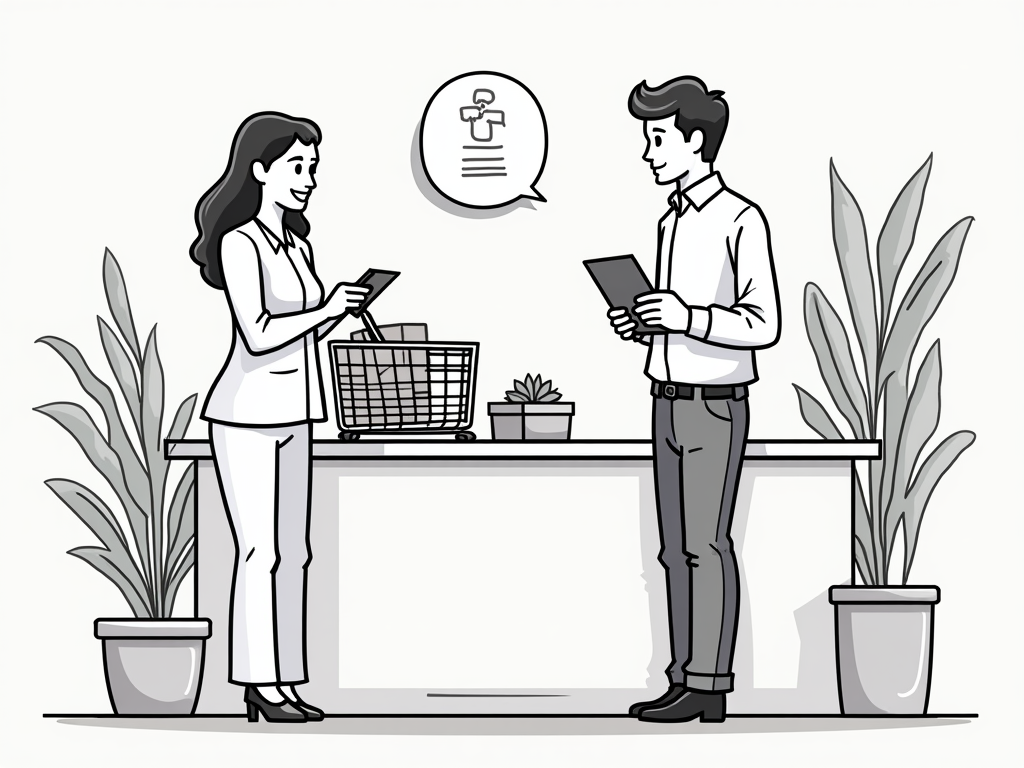
Navigating VAT Requirements for Estonian Businesses with Foreign Clients: A Comprehensive Guide
Reading time: 12 minutes
Table of Contents
- Introduction: The VAT Challenge for Estonian Businesses
- Understanding Estonian VAT Fundamentals
- B2B Transactions: VAT Application for Foreign Business Clients
- B2C Transactions: VAT Rules for Foreign Individual Customers
- Special Rules for Digital Services and Products
- VAT Compliance Strategies and Best Practices
- Real-World Case Studies: Estonian Businesses Handling VAT
- Common Challenges and How to Overcome Them
- Conclusion: Building a Sustainable VAT Strategy
- Frequently Asked Questions
Introduction: The VAT Challenge for Estonian Businesses
You’ve established your Estonian business and started attracting international clients—congratulations! But now you’re facing that persistent question that keeps many entrepreneurs awake at night: “Do I need to charge VAT to my foreign clients?” It’s not just about compliance; it’s about optimizing your pricing strategy, maintaining competitive advantage, and avoiding potential penalties.
The answer isn’t a simple yes or no. It depends on several critical factors: who your clients are (businesses or consumers), where they’re located (EU or non-EU), what you’re selling (goods, services, or digital products), and your company’s VAT registration status. Navigating these variables can feel like solving a complex puzzle with moving pieces.
Here’s the straight talk: understanding VAT requirements isn’t just a compliance exercise—it’s a strategic business decision that directly impacts your bottom line and scalability. Throughout this guide, we’ll transform these complexities into practical, actionable insights that you can implement immediately.
Understanding Estonian VAT Fundamentals
Before diving into international scenarios, let’s establish a solid foundation of Estonian VAT basics:
Estonian VAT Registration Thresholds
In Estonia, the standard VAT rate is 20%, with reduced rates of 9% applicable to specific categories like accommodation, books, and certain medications. The VAT registration threshold is €40,000 in annual turnover. Once you cross this threshold, registration becomes mandatory within 3 business days.
However, here’s a strategic insight many entrepreneurs miss: you can voluntarily register for VAT before reaching this threshold. This might be advantageous if you have significant input VAT to reclaim or if you want to project a more established business image to larger clients.
According to the Estonian Tax and Customs Board statistics, approximately 68% of businesses register for VAT before reaching the mandatory threshold, suggesting that early registration offers strategic advantages for many companies.
“Voluntary VAT registration in Estonia can be a competitive advantage, especially for B2B service providers. It signals financial readiness and opens doors to larger corporate clients who prefer to work with VAT-registered entities,” explains Mari Tamm, Tax Advisor at Grant Thornton Baltic.
The Significance of VAT ID Number
Once registered, your Estonian VAT identification number (formatted as EE followed by nine digits) becomes a crucial business credential. This number verifies your business’s tax status and is essential for intra-EU transactions. You can validate any EU company’s VAT number through the VIES (VAT Information Exchange System) database, a practice that should become routine for your business processes.
B2B Transactions: VAT Application for Foreign Business Clients
When working with business clients, the VAT landscape differs significantly based on their location:
EU-Based Business Clients
For B2B transactions with EU-based companies, the reverse charge mechanism typically applies. This means:
- You generally do not charge VAT on your invoice
- Your client self-accounts for VAT in their country under the reverse charge mechanism
- Your invoice must include both your VAT ID and your client’s valid VAT ID
- You must include the statement: “Reverse charge, Article 196 of Council Directive 2006/112/EC”
- These transactions must be reported in your EC Sales List (ESL) and VAT return
Let’s consider a practical scenario: Your Estonian software development company provides consulting services worth €10,000 to a German manufacturing firm. Instead of adding €2,000 (20% Estonian VAT) to your invoice, you issue a zero-VAT invoice with the reverse charge notation. The German company applies their local VAT rate through their VAT return. This simplifies your process while ensuring tax compliance in both jurisdictions.
Non-EU Business Clients
When your client is a business outside the EU, the transaction typically falls outside the scope of EU VAT. In most cases:
- You do not charge VAT
- The service is considered exported and not subject to Estonian VAT
- Your invoice should reference the legal basis for VAT exemption
- You still report these transactions in your VAT return as zero-rated exports
For example, if your Estonian marketing agency provides services to a US-based technology firm, you would not charge VAT. However, you must maintain proper documentation proving your client is indeed a business entity located outside the EU (business registration documents, official correspondence, etc.).
B2C Transactions: VAT Rules for Foreign Individual Customers
The rules change substantially when selling to individual consumers rather than businesses:
EU-Based Individual Customers
When selling services to EU consumers, the place of supply rules determine where VAT should be charged:
- For most general services, you charge Estonian VAT (20%)
- For digital services, telecommunications, and broadcasting services, you must charge VAT at the rate applicable in the customer’s country
- For digital services, you can simplify compliance through the One-Stop Shop (OSS) system
This creates an interesting strategic consideration: If you’re primarily serving consumers in EU countries with lower VAT rates than Estonia’s 20% (like Luxembourg’s 16%), the place of supply rules could potentially reduce your price point, giving you a competitive advantage.
Non-EU Individual Customers
For consumers located outside the EU:
- Most services are not subject to Estonian VAT
- Digital services may still be subject to local VAT/GST in the customer’s country
- You need to assess case-by-case whether you have registration obligations in those countries
A growing challenge here is that many non-EU countries are implementing their own digital services tax regimes. For instance, if your Estonian e-learning platform has significant sales to Australian consumers, you may need to register for Australia’s GST once you exceed their threshold (currently AUD 75,000).
Special Rules for Digital Services and Products
Digital services deserve special attention as they’re subject to specific regulations:
The Mini One-Stop Shop (MOSS) and One-Stop Shop (OSS)
The OSS system (which replaced MOSS in July 2021) simplifies VAT compliance for digital service providers. Instead of registering in each EU country where you have customers, you can:
- Register once through the Estonian OSS portal
- Submit a single quarterly OSS return covering all your EU sales
- Pay all EU VAT through the Estonian Tax Board, which distributes it to the respective member states
This system significantly reduces administrative burden, especially for smaller businesses. According to European Commission data, the OSS system saves the average company an estimated €8,000 annually in compliance costs compared to individual country registrations.
Verification of Customer Location
For digital services, determining your customer’s location is crucial for applying the correct VAT rate. You need to collect and maintain two non-contradictory pieces of evidence, such as:
- Customer’s billing address
- IP address
- Bank details
- Country code of SIM card
- Location of fixed landline
This isn’t just a regulatory requirement—it’s a data opportunity. The location data you collect for VAT purposes can provide valuable market insights for your business development strategy.
VAT Compliance Strategies and Best Practices
Beyond understanding the rules, implementing effective compliance strategies is essential:
| Compliance Strategy | Implementation Complexity | Cost Implications | Risk Reduction | Business Impact |
|---|---|---|---|---|
| Automated VAT determination software | Medium-High | €1,000-5,000 annually | Very High | Enables scaling across markets |
| Quarterly VAT audit by specialist | Low | €500-1,500 per audit | High | Identifies issues before tax authorities do |
| Client VAT status verification protocol | Low | Minimal | Medium | Prevents incorrect invoicing |
| OSS registration for digital services | Medium | Administration time only | High | Simplifies multi-country compliance |
| Documentation standardization system | Medium | Initial setup cost + maintenance | High | Crucial for defending positions in audits |
Record-Keeping Requirements
Estonian tax law requires maintaining detailed records for 7 years. For international transactions, this includes:
- Copies of all invoices issued and received
- Proof of customer status (business or consumer)
- Evidence of customer location
- Documentation of VAT treatment decisions
- VIES verification records for EU business clients
Pro tip: Implement a digital document management system with VAT-specific tagging to ensure you can quickly retrieve transaction documentation during audits. This small investment can save countless hours and potential penalties during tax authority reviews.
VAT Recovery Opportunities
While focusing on charging VAT correctly, don’t overlook opportunities to recover VAT on your business expenses:
- Estonian input VAT is directly recoverable through your VAT return
- VAT paid in other EU countries can be reclaimed through the electronic VAT refund system
- Non-EU VAT recovery depends on reciprocal agreements and varies by country
Many Estonian businesses leave significant money on the table by not pursuing cross-border VAT recovery. According to VAT IT, a global VAT recovery specialist, approximately 55% of eligible foreign VAT goes unclaimed by EU businesses, representing a substantial missed opportunity to improve cash flow.
Real-World Case Studies: Estonian Businesses Handling VAT
Case Study 1: Software-as-a-Service Provider
TalTech Solutions, an Estonian SaaS company offering project management tools, implemented a tiered VAT compliance strategy as they scaled:
Initial stage (€30,000 annual revenue): Voluntarily registered for VAT to reclaim input VAT on development costs. Manually verified EU business customers through VIES and issued reverse charge invoices.
Growth stage (€500,000 annual revenue): Implemented automated VAT determination in their billing system. Registered for OSS to handle B2C sales across the EU. Contracted quarterly VAT reviews with a specialist accounting firm.
Results: Their proactive approach prevented an estimated €45,000 in potential penalties and reduced administrative time by approximately 15 hours per month. The clear VAT handling also improved customer satisfaction, with a 23% reduction in billing-related support tickets.
Case Study 2: E-commerce Retailer of Physical Goods
Baltic Designs, an Estonian handcrafted furniture e-commerce business, faced complex VAT challenges when selling to both businesses and consumers across Europe:
Challenge: They needed to navigate the complex rules for distance selling of physical goods, with different thresholds in each EU country before July 2021, and the new OSS system afterward.
Solution: They integrated a tax calculation engine with their e-commerce platform that determined VAT requirements in real-time based on customer type, location, and order value. For B2B sales, they implemented an automated VAT number validation system that triggers the reverse charge mechanism when appropriate.
Results: Their streamlined approach allowed them to expand to 17 EU markets without establishing local VAT registrations in each country, saving an estimated €40,000 annually in compliance costs. Their accurate VAT handling also became a competitive advantage when seeking retail partnerships with larger EU chains.
Common Challenges and How to Overcome Them
Even with careful planning, VAT compliance presents ongoing challenges:
Determining Customer Status (B2B vs. B2C)
It’s not always obvious whether you’re dealing with a business or consumer client. Implement a formal verification process:
- Request and verify VAT numbers for all EU business clients
- Establish clear protocols for handling clients who claim business status but don’t provide VAT numbers
- Document your verification process for each transaction
- Consider implementing contractual clauses that require clients to inform you of any status changes
Quick scenario: A client signs up using a personal email but mentions they’re purchasing for their company. Before processing, your system should automatically trigger a VAT ID request workflow, with fallback procedures for businesses below the registration threshold in their country.
Navigating Marketplace Facilitator Rules
If you sell through online marketplaces like Amazon or eBay, you face additional complexity. Since July 2021, these platforms often become the deemed supplier for VAT purposes on certain transactions. This requires clear coordination:
- Document which platform handles VAT on which transactions
- Ensure your accounting system correctly tracks marketplace-facilitated sales
- Regularly reconcile marketplace VAT reports with your internal records
One Estonian craft brewery selling through European marketplaces created a color-coded transaction tracking system that immediately identifies which entity (themselves or the marketplace) is responsible for VAT accounting on each sale, significantly reducing reporting errors.
Conclusion: Building a Sustainable VAT Strategy
The question “Do I need to charge VAT to foreign clients?” doesn’t have a universal answer—it depends on your specific business model, client base, and growth trajectory. However, developing a comprehensive VAT strategy isn’t just about compliance; it’s about creating sustainable business practices that support your expansion goals.
Successful Estonian businesses approach VAT strategically, not just as a tax obligation. They:
- Invest in appropriate systems early, before compliance becomes overwhelming
- Build VAT considerations into their pricing and market entry decisions
- View VAT expertise as a competitive advantage, not just a cost center
- Regularly review their VAT position as regulations and their business evolve
Remember that VAT compliance is not a one-time project but an ongoing business practice. By developing robust systems and staying informed about regulatory changes, you transform a potential administrative burden into a foundation for sustainable international growth.
As your Estonian business expands globally, your VAT approach will need to evolve—but the principles of thorough documentation, systematic verification, and strategic compliance will remain constant keys to success.
Frequently Asked Questions
How does the €10,000 threshold for cross-border B2C digital services impact Estonian businesses?
The €10,000 threshold applies to the total value of cross-border B2C digital services, telecommunications, and broadcasting services to all EU countries combined. Once you exceed this amount in a calendar year (or expect to), you must charge VAT at the rate applicable in each customer’s country rather than Estonian VAT. This is a significant consideration for small Estonian digital businesses, as exceeding this relatively low threshold increases compliance complexity. However, the OSS system simplifies this by allowing you to report and pay all EU VAT through the Estonian Tax Board rather than registering in each customer country. Track your cross-border sales carefully—many businesses exceed this threshold without realizing it, inadvertently creating compliance issues.
What specific documentation should I maintain to prove the B2B status of my non-EU clients?
For non-EU business clients, where VIES verification isn’t available, you should maintain a more robust documentation package, including: 1) A copy of your client’s business registration certificate or extract from their local commercial register; 2) Official company documentation showing their business address and tax identification numbers; 3) Formal purchase orders on company letterhead; 4) Payment records showing the transaction came from a business account; and 5) A signed declaration from the client confirming they’re purchasing as a business entity. This documentation becomes particularly important during tax audits, as the burden of proof for VAT exemption lies with you as the service provider. Implement a standardized client onboarding process that collects this documentation upfront to avoid scrambling for it during audits.
How do I correctly handle VAT for training services delivered online to mixed audiences of EU and non-EU participants?
Online training services present a particular challenge because they often involve participants from multiple jurisdictions. The VAT treatment depends on whether the service is considered an electronically supplied service or an educational service, and whether participants are businesses or consumers. For B2B participants, the reverse charge typically applies for EU businesses, while services to non-EU businesses are generally outside the scope of EU VAT. For B2C participants, if your training qualifies as an electronically supplied service with minimal human intervention, you must charge VAT based on each consumer’s location (using OSS for EU consumers). However, if your training involves significant human interaction (like live tutoring or personalized feedback), it follows the general rule for services, meaning Estonian VAT applies to EU consumers. Create separate registration pathways for business and consumer participants, and collect location evidence during registration to apply the correct VAT treatment to each participant.






